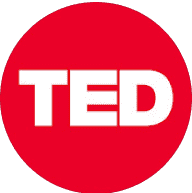An Evening with The Zohar
The 92nd Street Y, New York・59 minutes read
Margo and Tom Pritzker's contribution to Jewish culture was recognized in a celebration of the Zohar Pritzker Edition project, highlighting the transformative impact of the Zohar on Jewish mysticism and spirituality. Daniel Matt's translation and commentary on the Zohar have made this mystical text accessible to modern Jews, sparking interest in reinvigorating mystical Judaism for the 21st century.
Insights
- The Zohar, a significant work of Jewish mysticism, redefines traditional conceptions of God as a multi-dimensional being with both unity and plurality, emphasizing human empowerment and responsibility in the universe.
- The revival of interest in Jewish mysticism, particularly Kabbalah, signifies a broader trend of renewed openness to ancient spiritual teachings in the post-war world, aligning with a return to Zion and the reconnection of the Jewish people to their roots.
- The Zohar's deep insights into language, pain, and human responsibility for disharmony in the cosmos, coupled with its symbolic interpretations of biblical texts, offer a new and profound understanding of Jewish identity and faith, transforming individuals' spiritual connections.
Get key ideas from YouTube videos. It’s free
Recent questions
What is the Zohar?
The Zohar is a mystical text.
Related videos

Rutgers University
Zohar and Kabbalah - Daniel Matt

Unpacked
Pop Kabbalah: When Secret Jewish Mysticism Goes Mainstream | Unpacked

BimBam
How did Kabbalah Begin? Brief History of Jewish Mysticism

Manly Hall Society
Manly P. Hall: The Kabbalah Unveiled | Knorr Von Rosenroth

TempleIsraelMI
Intro to Kabbalah (1 of 5)
Summary
00:00
Zohar Pritzker Edition: Scholars and Insights
- Margo and Tom Pritzker have made a significant contribution to Western and Jewish cultural, intellectual, and spiritual life.
- Yonatan Ben-Ari Ovadia and Merav Carmely are scholars who located and prepared manuscripts and manuscript fragments of the Zohar for translation.
- The event commemorates the completion of the Zohar Pritzker Edition project, with scholars like Moshe Halbertal, Daniel Matt, and Arthur Green present.
- Joel Hecker, a professor of Jewish mysticism, will share his experience with the Zohar translations.
- The event includes a teaching session by Daniel Matt on his translation and commentary of the Zohar.
- The quality of Daniel Matt's translation and commentary is praised for its contribution to English-speaking Jewish scholars.
- The Zohar is highlighted for its interpretive boldness, innovative readings, and creative interpretations of biblical and rabbinic texts.
- The Zohar presents a new conception of God as a self-emanating, multi-dimensional being with unity and plurality.
- The Zohar empowers humans with a significant role in the universe, unlike any other work in Jewish or world literature.
- The Zohar's deep insights into pain, sighing, and linguistic expressions reflect the foundational structure of language and the divine being, emphasizing human responsibility for disharmony in the cosmos.
22:59
Reviving Jewish Mystical Tradition Through Kabbalah
- The Jewish mystical tradition was once excluded from mainstream Judaism due to its esoteric nature, contrasting with the ethical monotheism presented by reform Judaism.
- The interest in reclaiming the Jewish mystical tradition, including Kabbalah, has grown in recent decades, with many books and courses now available on the subject.
- The restoration of the mystical tradition to Jewish mainstream is part of a broader trend of renewed openness to ancient spiritual teachings in the post-war world.
- The return to Zion and the reconnection of the Jewish people to their ancient homeland has stirred deep spiritual forces within the Jewish soul, leading to a renewed interest in Kabbalah.
- The Zohar, the greatest work of Kabbalah, is a book filled with light and mystical enlightenment, written in late 13th century Spain.
- The Zohar reinterprets biblical verses and Jewish tradition using a new symbolic language, transforming concepts like the Sabbath into the mythical bride of God.
- The Zohar presents a deeper and richer Judaism, engaging with the affect Raxus and diving into its meaning in a way never explored before.
- The Zohar invites readers to join in an endless conversation among wandering heroes, offering a depth and complexity that was inaccessible to prior generations.
- The Zohar was composed as an esoteric work in Aramaic to deepen its mystery and fuel the imagination of Jews who were forbidden to depict their inner lives in visual arts.
- Ordinary Jews from various regions chanted the Zohar aloud, inspired by its language, while later mystics retooled its language to express their own ideas and experiences, forming a marvel of Kabbalistic dissemination through generations.
37:39
Reviving Mystical Judaism in Modern Times
- The availability of the Pritzker Edition of the Zohar with Daniel Matt's commentary has made the Zohar accessible for modern Jews.
- The essential question posed is how to utilize this recovered mystical legacy to revive devotion in American synagogues.
- A new mystical Judaism is potentially emerging, requiring a blend of study, devotion, and creativity.
- The challenge lies in translating the poetic medieval Kabbalah language into a theology relevant for the 21st century.
- The Zohar emphasizes the redemptive power of love through a homily on the value of a kiss, symbolizing the Messianic spirit.
- The Zohar narrates encounters where seemingly ignorant individuals reveal profound kabbalistic knowledge, inspiring spiritual exploration.
- The Zohar delves into the recital of the Sh'ma prayer, highlighting a dispute over the number of words and the spiritual lesson behind it.
- Manuscripts reveal a historical controversy over the recitation of the Sh'ma, leading to changes in practice and the Zohar's text.
- Love and mystical unity are central themes in the Zohar, transforming individuals and connecting them to divinity.
- The Zohar's impact is profound, transforming the perception of letters, texts, and Jewish identity, keeping individuals connected to their faith.
55:03
Zohar: Expulsion of Adam and Divine Feminine
- The Zohar is a commentary on the Torah, with this page focusing on the expulsion of Adam and Eve from the garden.
- The word "et" in Hebrew, which means nothing, is used to link the verb and object, acting as a particle.
- Rabbi Akiva and others have debated the significance of the word "et" in Hebrew, despite its lack of translation.
- The Zohar interprets the expulsion of Adam as a divorce of the divine feminine, Shekinah, from God.
- Shekinah is symbolically referred to as "at," representing the Alpha and Omega, encompassing all divine qualities.
- The Zohar suggests that Adam's expulsion of Shekinah led to a split in the divine, causing human alienation from the divine.
- The Zohar introduces a new tradition of interpreting the expulsion of Adam as a separation of the divine feminine.
- A story in the Zohar involves two rabbis meeting an old man who turns out to be a sage in disguise, teaching them about the path of truth in Torah.
- The Zohar uses a parable of a maiden in a palace to explain how Torah reveals itself to those who seek wisdom.
- Torah is described as revealing and concealing itself to those who seek knowledge, using hints, riddles, and allegorical readings to guide them.
01:12:10
Unveiling the Mysteries of The Zohar
- The Zohar, a mystical text, progresses from simple to deep meanings, emphasizing the importance of returning to the basic interpretation after delving into mystical insights.
- The Zohar is traditionally attributed to Rabbi Shimon, but scholars agree it was likely written in Spain in the 13th century, possibly by Moses de Leon.
- Daniel Matt approached the translation of Adora Raba, a dense part of the Zohar, with caution and meditation, respecting the primal energy of the text.
- The completion of the Zohar Pritzker edition by Daniel Matt was celebrated at the University of Chicago, with volumes including translation, commentary, critical Aramaic edition, and variant readings.
- The Zohar Pritzker edition marks the beginning of the text's life, ensuring future generations understand and appreciate the extensive work accomplished.




